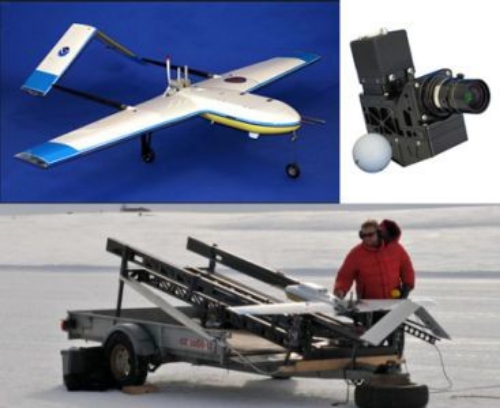Researchers from Columbia University’s Air-Sea-Ice Physics and Bio geochemistry Experiment (ASIPBEX) will utilize unmanned aerial vehicles (UAV) to investigate climatological changes present in the Arctic Ocean around Svalbard, Norway.
In the remote sensing project, the UAV will assess ocean and sea ice variability in this Arctic zone. The UAV will be fitted with two Micro-Hyperspec hyperspectral sensors from Headwall Photonics, the first of which— the A-Series sensor—covers the visible near infrared (VNIR) spectrum (400-1000 nm). This sensor is fitted with a silicon CCD focal plane array with a 7.4 µm x 7.4 µm pixel size. It features a 1.9 nm spectral resolution, a dynamic range of 60 dB, and a frame rate of greater than 90 fps. In addition, it has an ADC bit depth of 12 and has a base Camera-Link interface
Headwall’s Micro-Hyperspec T-Series sensor, the UAV’s second sensor, covers the near-infrared (NIR) spectrum (900-1700 nm). This TE-cooled sensor features an InGaAs infrared focal plane array with a 25 µm x 25 µm pixel size, as well as a 5 or 10 (dispersion dependent) spectral resolution, a dynamic range of 76 dB, and a frame rate of greater than 100 fps. It also features an ADC bit depth of 14 and has a base Camera-Link digital output format.
Together, the two sensors, along with Headwall’s Hyperspec II airborne software, will be used to detect indicators of sea ice physics, solar warming, and global carbon cycles.
“The UAS allows scientists to measure in places that typically are impossible to get to using ships or manned aircraft,” stated Christopher Zappa, a Lamont Research Professor at Columbia’s Lamont-Doherty Earth Observatory in a Headwall press release. “This opens up the possibility for trans-formative understanding of the climate system. Since we’re using a UAS, we depend on ‘seeing’ as much of the ocean surface as possible, minimizing any aberrations or unwanted artifacts along the edges of the field of view.”
ASIPBEX is part of an international collaborative investigation of climate cryosphere interaction with colleagues from Spain, Germany and Norway.
Source: Vision Systems

